Stanislav Sobolevsky
A Perspective on Foundation Models for the Electric Power Grid
Jul 12, 2024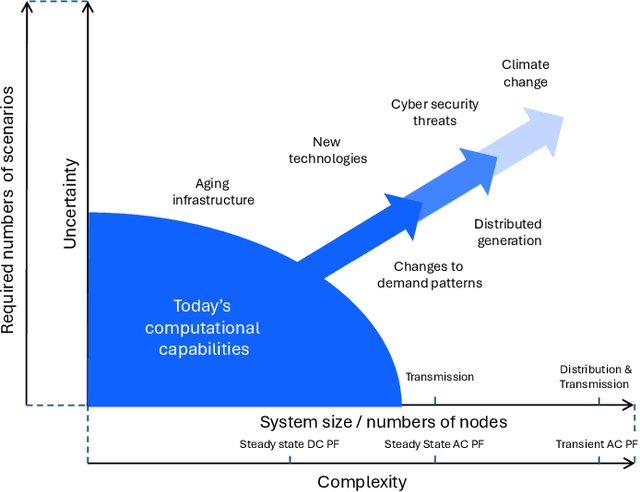
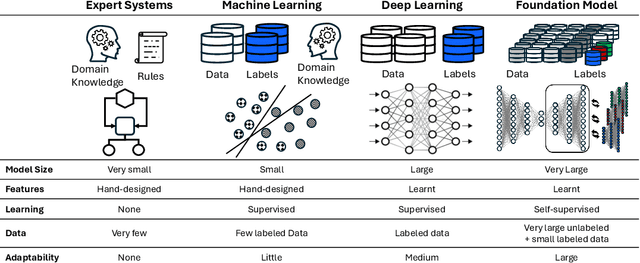
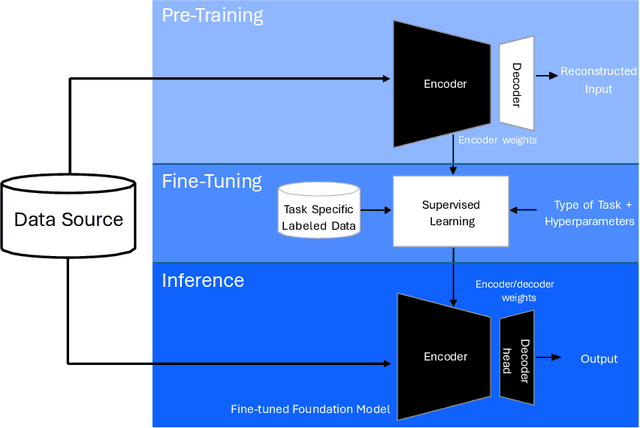

Abstract:Foundation models (FMs) currently dominate news headlines. They employ advanced deep learning architectures to extract structural information autonomously from vast datasets through self-supervision. The resulting rich representations of complex systems and dynamics can be applied to many downstream applications. Therefore, FMs can find uses in electric power grids, challenged by the energy transition and climate change. In this paper, we call for the development of, and state why we believe in, the potential of FMs for electric grids. We highlight their strengths and weaknesses amidst the challenges of a changing grid. We argue that an FM learning from diverse grid data and topologies could unlock transformative capabilities, pioneering a new approach in leveraging AI to redefine how we manage complexity and uncertainty in the electric grid. Finally, we discuss a power grid FM concept, namely GridFM, based on graph neural networks and show how different downstream tasks benefit.
Hierarchical Graph Neural Networks
May 14, 2021

Abstract:Over the recent years, Graph Neural Networks have become increasingly popular in network analytic and beyond. With that, their architecture noticeable diverges from the classical multi-layered hierarchical organization of the traditional neural networks. At the same time, many conventional approaches in network science efficiently utilize the hierarchical approaches to account for the hierarchical organization of the networks, and recent works emphasize their critical importance. This paper aims to connect the dots between the traditional Neural Network and the Graph Neural Network architectures as well as the network science approaches, harnessing the power of the hierarchical network organization. A Hierarchical Graph Neural Network architecture is proposed, supplementing the original input network layer with the hierarchy of auxiliary network layers and organizing the computational scheme updating the node features through both - horizontal network connections within each layer as well as the vertical connection between the layers. It enables simultaneous learning of the individual node features along with the aggregated network features at variable resolution and uses them to improve the convergence and stability of the individual node feature learning. The proposed Hierarchical Graph Neural network architecture is successfully evaluated on the network embedding and modeling as well as network classification, node labeling, and community tasks and demonstrates increased efficiency in those.
Recurrent Graph Neural Network Algorithm for Unsupervised Network Community Detection
Mar 03, 2021



Abstract:Network community detection often relies on optimizing partition quality functions, like modularity. This optimization appears to be a complex problem traditionally relying on discrete heuristics. And although the problem could be reformulated as continuous optimization, direct application of the standard optimization methods has limited efficiency in overcoming the numerous local extrema. However, the rise of deep learning and its applications to graphs offers new opportunities. And while graph neural networks have been used for supervised and unsupervised learning on networks, their application to modularity optimization has not been explored yet. This paper proposes a new variant of the recurrent graph neural network algorithm for unsupervised network community detection through modularity optimization. The new algorithm's performance is compared against a popular and fast Louvain method and a more efficient but slower Combo algorithm recently proposed by the author. The approach also serves as a proof-of-concept for the broader application of recurrent graph neural networks to unsupervised network optimization.
Pattern Ensembling for Spatial Trajectory Reconstruction
Jan 25, 2021



Abstract:Digital sensing provides an unprecedented opportunity to assess and understand mobility. However, incompleteness, missing information, possible inaccuracies, and temporal heterogeneity in the geolocation data can undermine its applicability. As mobility patterns are often repeated, we propose a method to use similar trajectory patterns from the local vicinity and probabilistically ensemble them to robustly reconstruct missing or unreliable observations. We evaluate the proposed approach in comparison with traditional functional trajectory interpolation using a case of sea vessel trajectory data provided by The Automatic Identification System (AIS). By effectively leveraging the similarities in real-world trajectories, our pattern ensembling method helps to reconstruct missing trajectory segments of extended length and complex geometry. It can be used for locating mobile objects when temporary unobserved as well as for creating an evenly sampled trajectory interpolation useful for further trajectory mining.
Transfer Learning from an Auxiliary Discriminative Task for Unsupervised Anomaly Detection
Dec 05, 2019
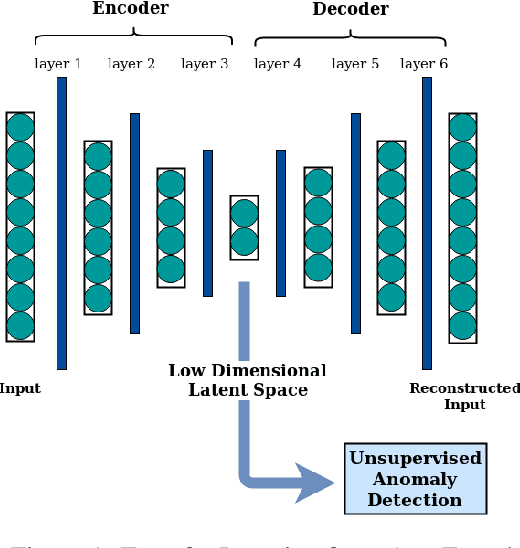

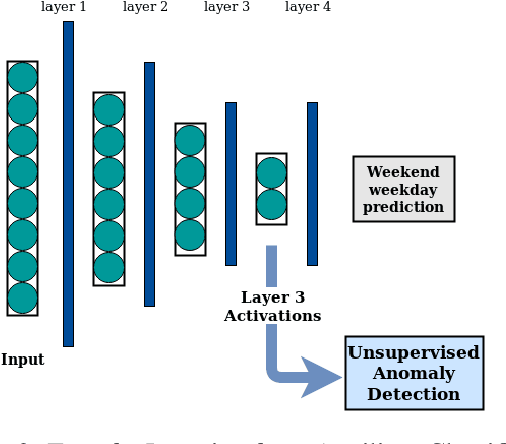
Abstract:Unsupervised anomaly detection from high dimensional data like mobility networks is a challenging task. Study of different approaches of feature engineering from such high dimensional data have been a focus of research in this field. This study aims to investigate the transferability of features learned by network classification to unsupervised anomaly detection. We propose use of an auxiliary classification task to extract features from unlabelled data by supervised learning, which can be used for unsupervised anomaly detection. We validate this approach by designing experiments to detect anomalies in mobility network data from New York and Taipei, and compare the results to traditional unsupervised feature learning approaches of PCA and autoencoders. We find that our feature learning approach yields best anomaly detection performance for both datasets, outperforming other studied approaches. This establishes the utility of this approach to feature engineering, which can be applied to other problems of similar nature.
Semantic Enrichment of Mobile Phone Data Records Using Background Knowledge
Apr 22, 2015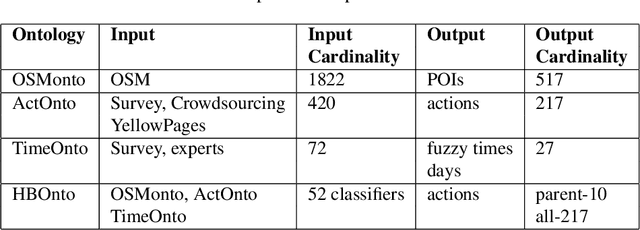
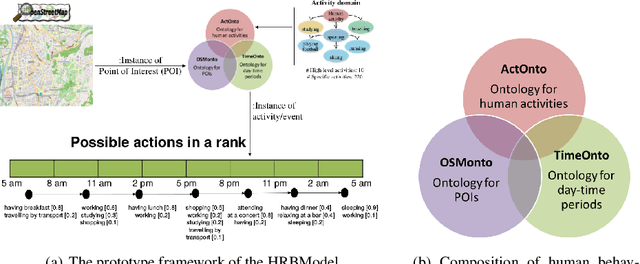
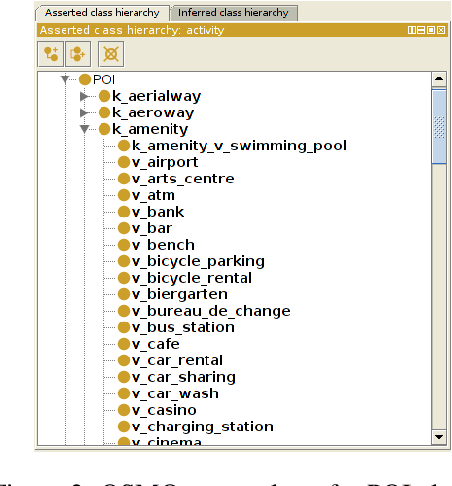
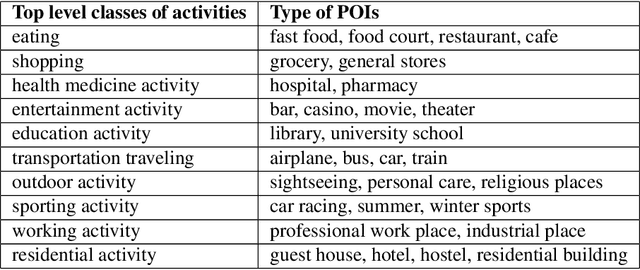
Abstract:Every day, billions of mobile network events (i.e. CDRs) are generated by cellular phone operator companies. Latent in this data are inspiring insights about human actions and behaviors, the discovery of which is important because context-aware applications and services hold the key to user-driven, intelligent services, which can enhance our everyday lives such as social and economic development, urban planning, and health prevention. The major challenge in this area is that interpreting such a big stream of data requires a deep understanding of mobile network events' context through available background knowledge. This article addresses the issues in context awareness given heterogeneous and uncertain data of mobile network events missing reliable information on the context of this activity. The contribution of this research is a model from a combination of logical and statistical reasoning standpoints for enabling human activity inference in qualitative terms from open geographical data that aimed at improving the quality of human behaviors recognition tasks from CDRs. We use open geographical data, Openstreetmap (OSM), as a proxy for predicting the content of human activity in the area. The user study performed in Trento shows that predicted human activities (top level) match the survey data with around 93% overall accuracy. The extensive validation for predicting a more specific economic type of human activity performed in Barcelona, by employing credit card transaction data. The analysis identifies that appropriately normalized data on points of interest (POI) is a good proxy for predicting human economical activities, with 84% accuracy on average. So the model is proven to be efficient for predicting the context of human activity, when its total level could be efficiently observed from cell phone data records, missing contextual information however.
* 40 pages, 34 figures
 Add to Chrome
Add to Chrome Add to Firefox
Add to Firefox Add to Edge
Add to Edge